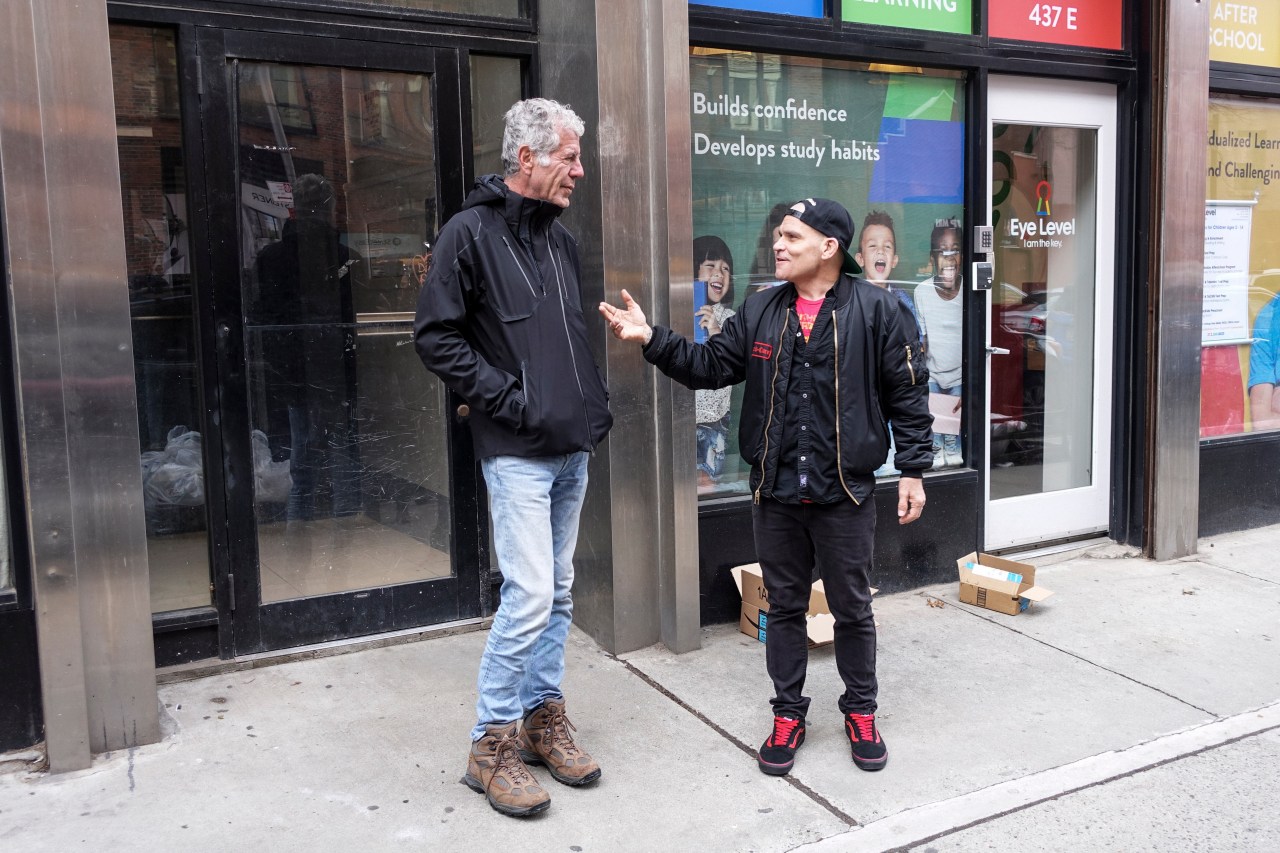Harley Flanagan became a fixture on New York’s punk rock scene at a young age. As the drummer for the Stimulators, he brushed shoulders with legends like Debbie Harry and Joe Strummer. By the time he was 14, he had co-founded Cro-Mags, the hardcore punk band. It was all exhilarating as well as traumatic, he says.
(When filming the Lower East Side episode of Parts Unknown, Anthony Bourdain raved about Harley’s memoir, Hard-Core: Life of My Own, saying “Don’t even pretend to talk about anything that happened in New York between 1970 and 1990 if you don’t read this.”)
Flanagan, who is now 51 and a jiujitsu instructor, spoke with Explore Parts Unknown’s Cengiz Yar about his childhood on the Lower East Side in the 1970s. His account was condensed and edited.
“When I moved to the Lower East Side as a kid, it was really early on in the punk rock days. Johnny Thunders and the Heartbreakers were playing at Max’s Kansas City, and the Dead Boys were playing at CBGB. Aside from all these weird little clubs, most of the music on the Lower East Side was salsa and merengue.
“I spent most of my childhood at clubs like Max’s, CBGBs, and Mudd Club. Places like the Palladium on 14th Street, where I saw the Clash play their first American tour in 1979. At that time all the English punk bands were coming over, the Ramones came from Queens, and the Dead Boys came from Ohio. A lot of the people and bands weren’t from the Lower East Side, but they came here because of the energy, the freedom. They came to the city to find all those after-hours bars, late-night clubs, and all those other crazy places.

“You ran a risk walking around being a freak, but at the same time the Lower East Side was the only place where you could really get away with it. It became kind of a scene of freaks.
“The Lower East Side at that time was really grimy and dangerous as hell. But there is a strange energy that danger creates. And if you’re not living on that edge, you’re not going to do anything really exciting.
“I don’t know if people realize how much crime, gang activity, and drugs were down here back then. There were blocks where they’d sell dope—burnt-out buildings with lines of junkies going around the corner. Garbage men pulling their trucks over to cop a hit. Dudes in business suits, with briefcases, running down the street to get their dope. It was madness.
“There was at least one robbery in my apartment building each week. The gang that ran my block was called the Hitmen, and they had a little storefront down the street from my building. You’d walk by that store and see all the s**t that had been stolen out of your apartment, but there wasn’t really much you could do about it.
“It was the type of neighborhood where if you made eye contact with somebody on your way to school or bumped into someone by accident, you might wind up fighting. I wasn’t an aggressive kid when I moved there, but I learned the ways of the neighborhood.
“Back then they sold alcohol to anybody at any age at the corner store. You could walk into any store and buy a tube of glue and put it in a paper bag and huff it. I first started getting high because the kids on my block forced me to. They stuck a paper bag over my face with glue in it and said, ‘Keep breathing. Or we’re gonna f**k you up.’ I was 12.
“The gang members’ drugs of choice were PCP and glue. They sold heroin but never used it. On 4th Street there was a mural of an American eagle with two syringes in its claws; it said, ‘Come fly high with us fools.’

“I do have a lot of great memories. It was fun exploring the back alleys, the buildings, the rooftops, and all the places that you don’t have access to now. I had a whole map of secret paths behind buildings and over roofs. When the cops chased us, we could outrun them.
“I avoid the Lower East Side now. I have as many great memories as I do really bad ones. I have serious anxiety when I’m down there, almost as if I have PTSD, even though I know nothing crazy is going to happen. I’ve been shot at, stabbed, jumped, and all that type of s**t. That type of trauma, especially when it occurs at a very young age, stays with you. I didn’t realize it was trauma then.
“The only friends of mine who really get it are combat veterans. Jocko Willink, a former Navy SEAL, has told me he thinks the Lower East Side was like a war zone. There were burnt-out buildings, burnt-out cars, rubble everywhere. People sleeping in the street, gangs running around knifing and robbing people. Jocko told me, “Yeah, that s**t was a war zone.”
“When a highly decorated Navy SEAL who has been in some serious combat tells you that your neighborhood was a war zone, you got to take a step back and say, Really, wow. No s**t.
“I did have great times down there. It’s just a weird mix of great times and really f****d-up trauma.”
Harley Flanagan is on Instagram and Twitter.